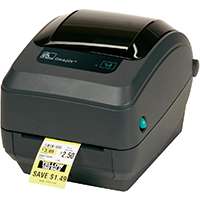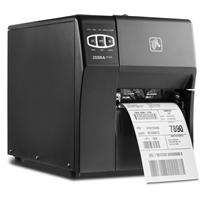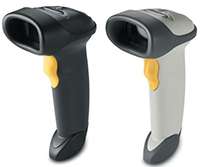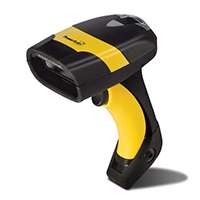Barcoding In A Warehouse
AM Labels Limited have been specialising in barcode label printers since 1996, and with 18 years of experience behind us we can guarantee that we will find the most suitable label printing solution. We can build a solution based around your own budget and needs. Our experienced staff can advise and guide you each step of the way, so even if you have no prior experience with barcoding solutions, we can provide you with all the information you need. Below we have compiled a document on the basics of barcoding within the warehouses, with links to our range of barcode labelling products. If you have any queries or are seeking a product with certain functionality, please feel freel to contact us to discuss further.
1. Software
Barcoding in the warehouse is essentially used to monitor and improve stock accuracy, improve efficiency and most importantly to ensure that the correct goods are sent to the correct customs. Functions typically include:
a) Receiving goods - Booking goods in against a purchase order.
b) Picking goods for dispatch - Booking goods out against a pick note generated from a sales order. Once the order has been picked a delivery note is printed either in the office or the warehouse and attached to the goods to be despatched. The delivery note is sometimes also used as the pick note.
c) Moving goods from one location to another.
d) Stock takes - The result of the stock take is reconciled against the expected stock on the accounts/sales order processing system.
Barcoding systems can either be bespoke or purchased as an add-on to the accounts/sales order processing system. For the system to work, it is essential that all goods have a barcode containing the product code. Goods received from external suppliers may already have a suitable product barcode, but often do not and a product barcode label will need to be printed and applied as part of the goods inwards procedure. The product barcode for manufactured goods will be printed and applied as part of the production process.
2. Barcode Scanning
Barcode scanning can be performed in three ways:
a) A corded scanner connected to a PC - Functionality is performed through the PC, with the only disadvantage being that the scanner must be used with the PC.
b) A wireless scanner connected to a PC – Whilst this also relies on PC functionality, the advantage is that the user can typically scan products 15-30M away. The user will need to return to the PC if they need to use they keyboard function.
c) A handheld computer with a screen and keyboard used in batch mode. There are two main options:
 Zenra ZT220 Industrial Label Printer
Zenra ZT220 Industrial Label Printer
 Motorola Symbol LS2208 Barcode Scanner
Motorola Symbol LS2208 Barcode Scanner
 Datalogic PowerScan D8300 Barcode Scanner
Datalogic PowerScan D8300 Barcode Scanner
 Datalogic PowerScan M8300 Barcode Scanner
Datalogic PowerScan M8300 Barcode Scanner
 Motorola Symbrol MC3100 Handheld Computer
Motorola Symbol MC9000 G Handheld Computer
Motorola Symbrol MC3100 Handheld Computer
Motorola Symbol MC9000 G Handheld Computer
 Motorola Symbol MC45
Motorola Symbol MC45
- Batch - Requires the program to reside on the handheld and the user is required to return to a PC at regular intervals to upload and download information.
- Wireless allows information to be transferred to and from the back office system in real time and ensures that stock information is always up to date.
 Zenra ZT220 Industrial Label Printer
Zenra ZT220 Industrial Label Printer
 Motorola Symbol LS2208 Barcode Scanner
Motorola Symbol LS2208 Barcode Scanner
 Datalogic PowerScan D8300 Barcode Scanner
Datalogic PowerScan D8300 Barcode Scanner
 Datalogic PowerScan M8300 Barcode Scanner
Datalogic PowerScan M8300 Barcode Scanner
 Motorola Symbrol MC3100 Handheld Computer
Motorola Symbol MC9000 G Handheld Computer
Motorola Symbrol MC3100 Handheld Computer
Motorola Symbol MC9000 G Handheld Computer
 Motorola Symbol MC45
Motorola Symbol MC45
